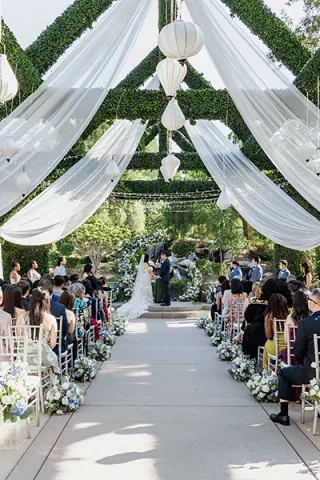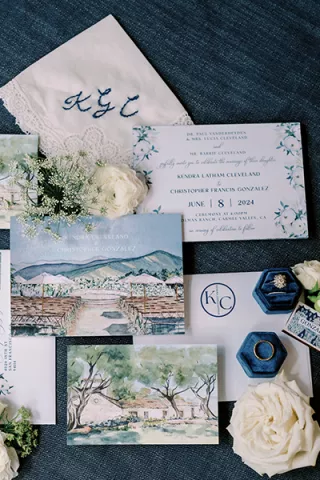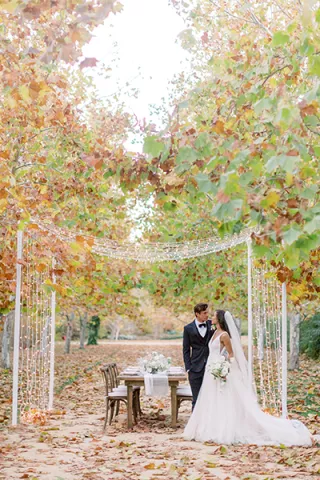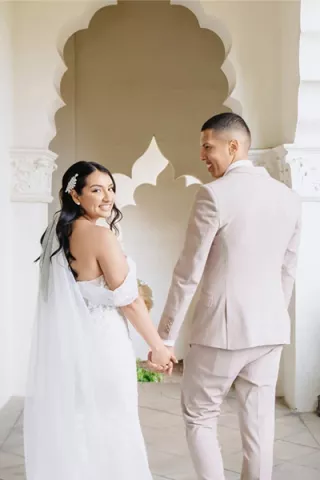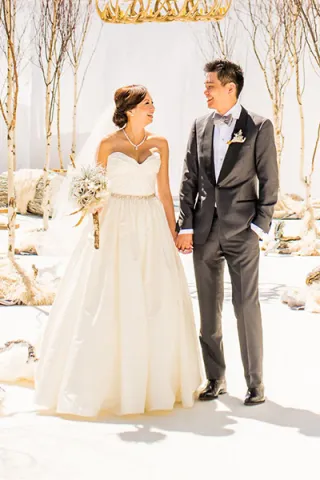As a wedding planner and owner of Vanessa Noel Events, I’m the team captain on the wedding day: directing vendors, bridal party and guests; troubleshooting problems; and styling decor. But there’s one point at which we wedding planners have very little control: during the ceremony itself. We can’t rush up the aisle to remind you of what we discussed in the rehearsal or to help guide you as you take Communion. The ceremony is when we hand over the reins to your officiant.
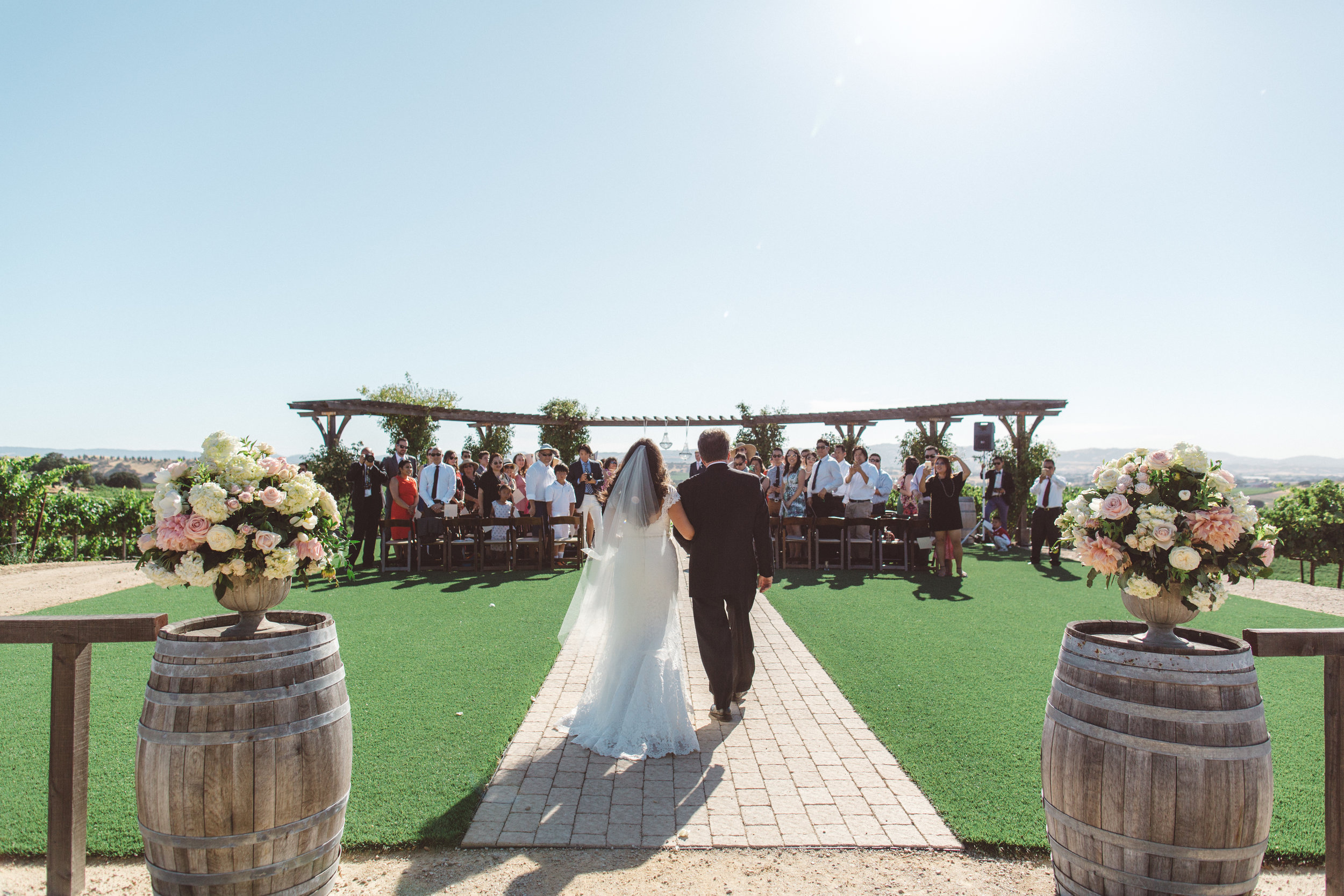
Anna Delores Photography
With the opportunity for anyone to become ordained online, many of my clients opt to have a friend or family member officiate their ceremony. While it’s incredibly personal to hear your godmother impart wisdom for a happy marriage or to hear an old college buddy regale guests with stories of the night you and your intended met, the job of officiating isn’t an easy one and involves a lot more than just knowing both of you well.
1. Meet With the Couple
This might seem obvious, but you’d be surprised how many people overlook this, thinking they know the couple so well that it’s not necessary. Do not wait until the rehearsal to determine the ceremony flow. Schedule a Skype session or phone call if meeting in person isn’t an option. Discuss the level of formality, spirituality and length of the ceremony. Does the couple want to have any readings, musical performances or a unity ceremony? Will they write their own vows, go with the traditional or perform a hybrid of both? There are a lot of details to discuss, so be sure to go through the couple’s priorities and ideas well before the wedding weekend.
2. Take Notes
You’ll likely have notes or a script prepared for the ceremony, but nothing is worse than fluttering notebook paper or an ugly legal pad in all the photos. Even if you only have one or two pages of notes, get a black binder to keep the look professional. If the couple has written their own vows, you’ll likely need a place to stash those during the ceremony, so something with a small pocket is especially helpful.
3. Find Your Center
You’re the anchor for the ceremony, figuratively and literally. You’re the first standing ceremony participant to enter and because of that, you determine the spacing for everyone else. If you’re off your mark, so is everyone else. During rehearsal, try to identify a landmark to help guide your placement. Use an arch or piece of decor on the wedding day as a point of reference to ensure that you are centered with the aisle. Better yet, take a moment prior to the ceremony to place a marker at the center point so you know exactly where to stand.
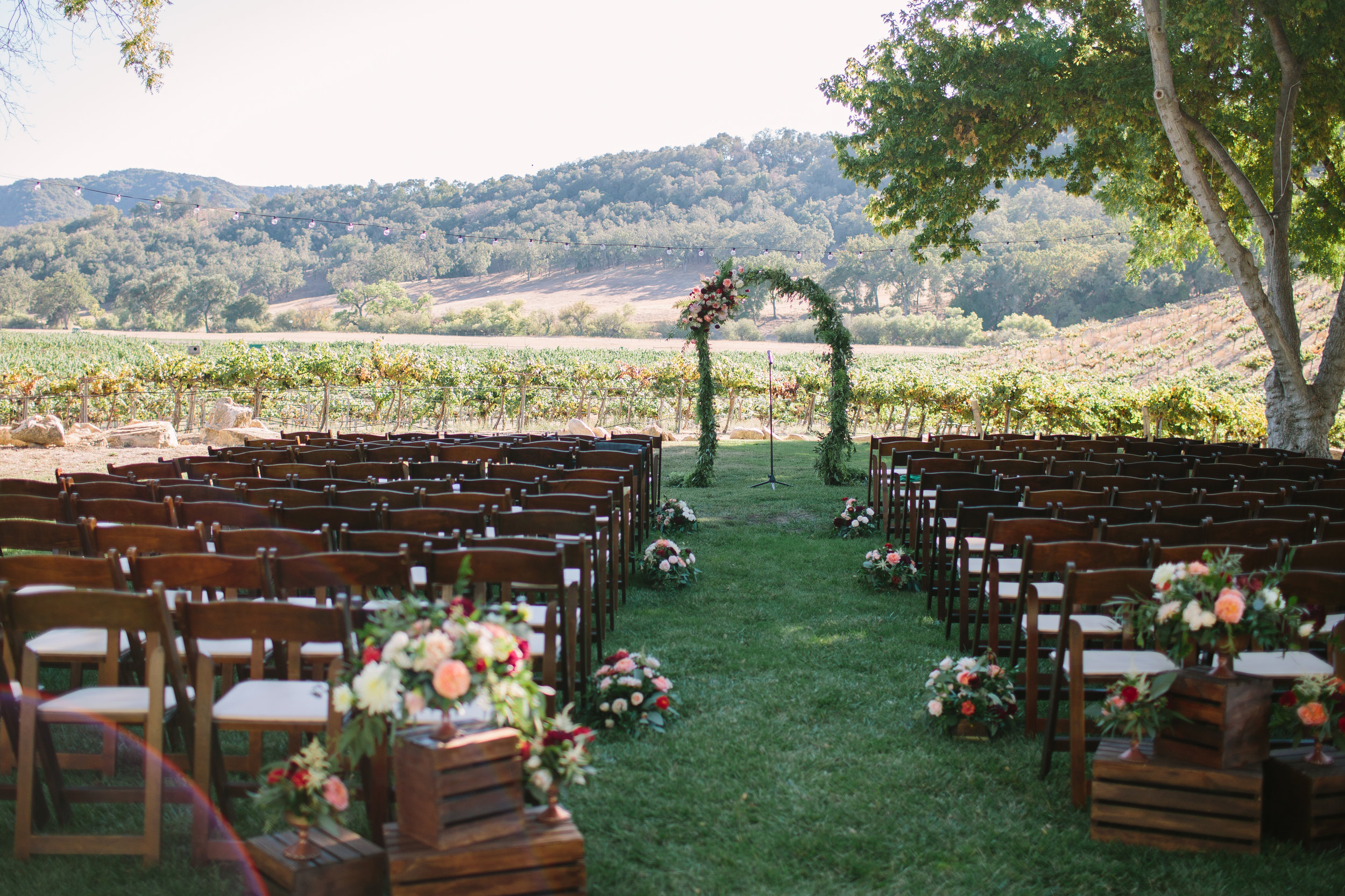 Joielala/Taryn Kent
Joielala/Taryn Kent
4. Ask Guests to be Seated
In a traditional Christian (spiritual and secular) ceremony, the guests all stand when the bride walks down the aisle. It’s a really beautiful moment, but one that can lead to uncomfortable guests and a nightmare for the photographer who is blocked by everyone’s backs. Identify a moment to ask guests to be seated after the bride walks down the aisle; it might be immediately after her entrance, after a prayer or after a welcome.
5. Guide the Couple
Sure, there will be a rehearsal, but to say that the couple is going to be a little distracted on their wedding day is an understatement. Pay attention to their nonverbal cues, when they’re silently screaming, “What do I do now?” and remember to guide them through the process. There’s no harm in saying, “Please face one another” if they forget their cue.
6. Identify Key Transitions
This is something the planner will help with at the rehearsal, but again, the officiant is team captain at the ceremony. The primary moments of transition are: getting from the aisle to the altar, handing off the bridal bouquet, exchanging the rings (who has them and how do you get them), and lastly, when does bride get her bouquet back (the answer to that one is always after the kiss).
7. Don’t Avoid the Awkward
I had a wedding on a mountainside with beautiful, sweeping views. While the scenery was gorgeous, the wind was challenging. During the ceremony, the bride’s long veil kept wrapping around her face and was getting so tangled, no one was paying attention to the words being said. The officiant, the bride’s uncle, made a little joke about it and helped her take it off so that she could be present during the vows. Sometimes, trying to pretend the awkwardness isn’t there makes it even more awkward. By calling out what everyone was already fixated on, he helped bring the focus of the ceremony back to its rightful place.
8. Step Aside
The bride and groom’s first kiss as a married couple is a big moment, and while you’re a huge part of the ceremony, you don’t want to be the focus in that moment. Immediately after you pronounce the couple married, take two big steps to the side so that the photographer can capture a beautiful shot of the newlyweds.
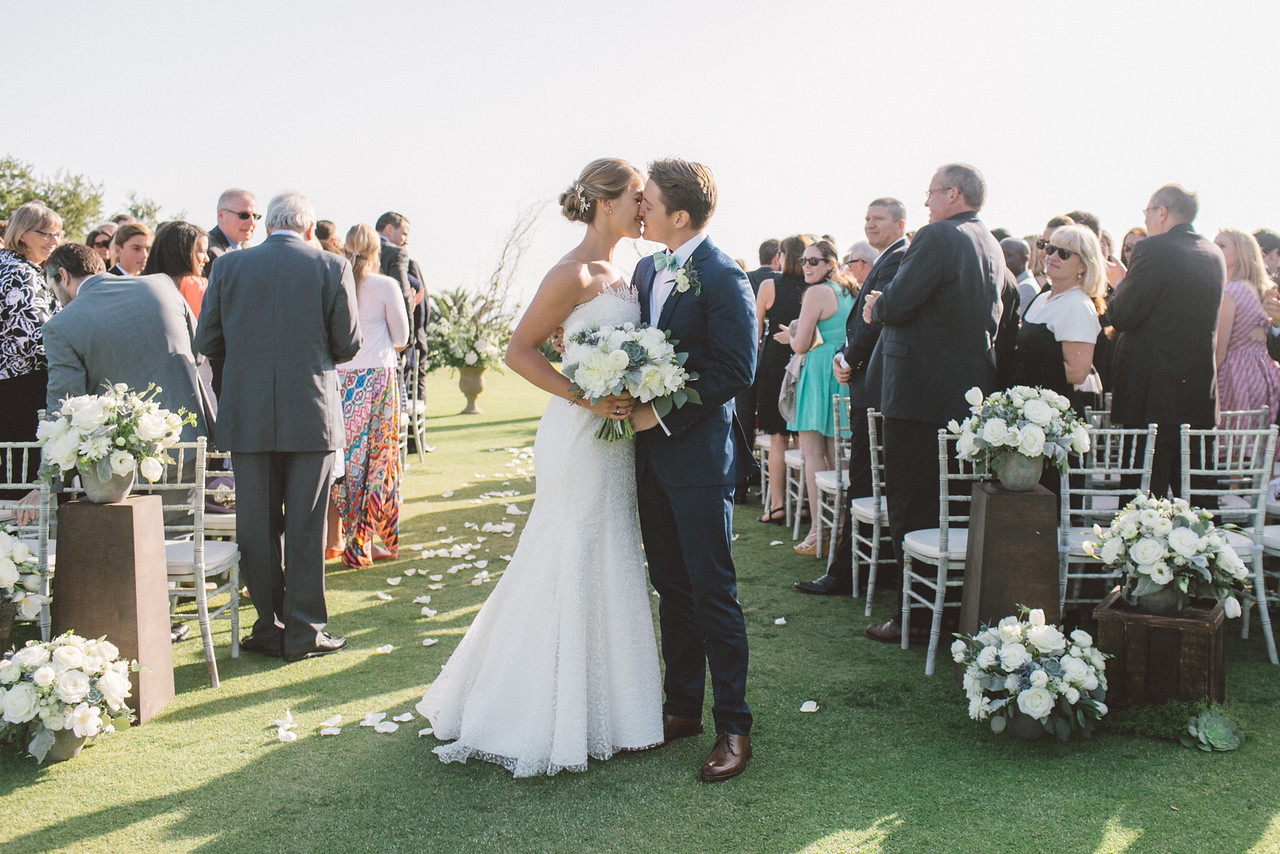
Claire and Brad, by Anna Delores Photography
Claire and Brad were wed at the seaside Montecito Country Club in Santa Barbara beneath an organic, ceremony arch of vines and verdant white florals created by Stella Bloom Designs. And with Claire’s grandmother serving as the officiant, the ceremony was filled with love. “Ceremonies are always sweet, but this one was especially beautiful and personal as her grandmother passed on wisdom and love,” says Vierra. “The day was a perfect representation of Claire and Brad as a couple—refined and sophisticated, with a bunch of fun and positivity thrown in.”

